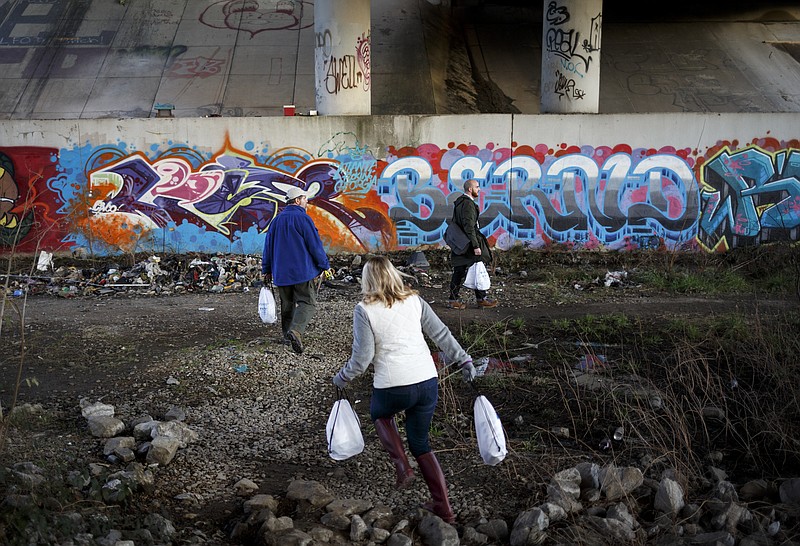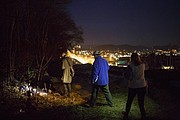Sam Wolfe spent Wednesday evening as he often does - trudging through mud, squeezing through brush and clambering up concrete embankments under highway overpasses.
He was searching for people who have made their homes in Chattanooga's forgotten corners, erecting tents and building fires to keep warm in winter's chill.
Wolfe, a homeless outreach coordinator at the Joe Johnson Mental Health Center, was among more than 50 volunteers who turned out this week to participate in a census of the region's homeless population.
"There used to be a guy up here who went by 'Wild Bill,'" Wolfe said as he drove up to the first campsite of the day. "He was a really funny character, but he was hit by a car last year and passed away."
The annual Point-in-Time count is led and organized by the Chattanooga Regional Homeless Coalition. It is intended to take a snapshot of individuals experiencing homelessness during a single 24-hour period.
Surveyors travel across the city in teams, walking into homeless camps to ask questions ranging from basic information to specific issues related to lifestyle and the relationships homeless people have with others.
That information is used by homeless advocacy groups and others to gauge how the homeless service delivery system is working in the region. It allows those service providers to better understand where and what needs are greatest. The results also factor into applications for funds from the U.S. Department of Housing and Urban Development that help fuel many of the services available.
Volunteers gathered at 4:30 p.m. in a building downtown and snacked on sandwiches while listening to Nicholas Amis, director of planning at the homeless coalition, give pointers on how to administer the survey.
"Be loud. Don't be sneaking up on people," he said. "And leave if someone doesn't want you there."
After receiving instructions, volunteers were split into teams and equipped with fat stacks of surveys - and goody bags filled with supplies. Then they piled into vans and took off for Hixson, Brainerd, St. Elmo and elsewhere.
Some camps are well-established and known by case workers who visit them when they can. However, part of the problem of providing help to people experiencing homelessness is how easily they can be uprooted.
Construction, weather and a number of other things can decimate camps that used to hold a couple dozen people, Wolfe said when he saw that one camp he had planned to visit was completely gone.
He groaned and said, "These people had a whole setup down here with a couch and everything."
That transience is a major issue for a group of people who already have minimal safety nets available to them, Wolfe said. Constant movement cripples the ability of services to reach out and connect people experiencing homelessness to solutions.
"Sometimes you get moved, and you have to go wherever you can," Wolfe said.
Transience also presents issues for the Point-in-Time Count, because it's impossible to determine the exact number of homeless people in the city at any given time. As a result, experts have wildly different estimates ranging anywhere from several hundred to a couple of thousand people.
The Relevant Hope service group reported last year there were 600 homeless people in the city. Data from the count currently underway won't be available for several weeks, and even then, there's no guarantee of accuracy.
But that doesn't stop volunteers and case workers every year from doing what they can to connect people who have virtually nothing to services they desperately need. That mission draws all kinds of people in Chattanooga.
Alex Johnson, an anesthetist who accompanied Wolfe on Wednesday, said he joined in because it's important to him to get involved.
"I'm trying to find a way to help out where I can," he said.
Contact staff writer Emmett Gienapp at egienapp@timesfreepress.com or 423-757-6731.

